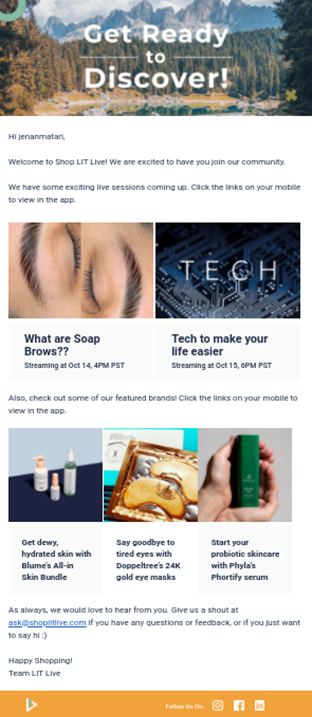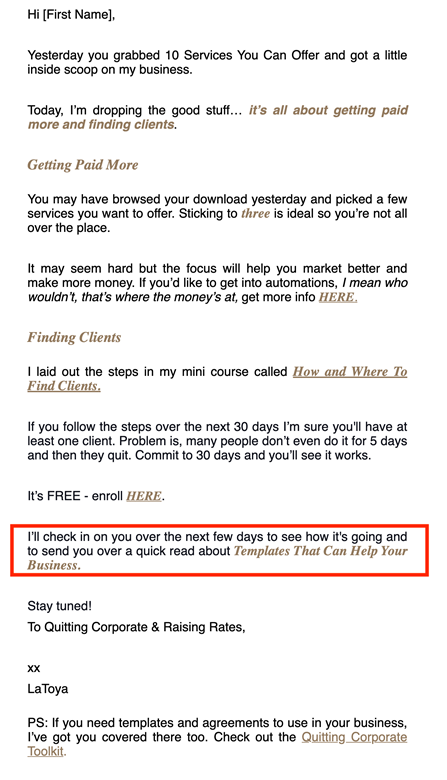MENU
Starting a Business
- Best Small Business Loans
- Best Business Internet Service
- Best Online Payroll Service
- Best Business Phone Systems
Our Top Picks
- OnPay Payroll Review
- ADP Payroll Review
- Ooma Office Review
- RingCentral Review
Our In-Depth Reviews
Finance
- Best Accounting Software
- Best Merchant Services Providers
- Best Credit Card Processors
- Best Mobile Credit Card Processors
Our Top Picks
- Clover Review
- Merchant One Review
- QuickBooks Online Review
- Xero Accounting Review
Our In-Depth Reviews
- Accounting
- Finances
- Financial Solutions
- Funding
Explore More
Human Resources
- Best Human Resources Outsourcing Services
- Best Time and Attendance Software
- Best PEO Services
- Best Business Employee Retirement Plans
Our Top Picks
- Bambee Review
- Rippling HR Software Review
- TriNet Review
- Gusto Payroll Review
Our In-Depth Reviews
- Employees
- HR Solutions
- Hiring
- Managing
Explore More
Marketing and Sales
- Best Text Message Marketing Services
- Best CRM Software
- Best Email Marketing Services
- Best Website Builders
Our Top Picks
- Textedly Review
- Salesforce Review
- EZ Texting Review
- Textline Review
Our In-Depth Reviews
Technology
- Best GPS Fleet Management Software
- Best POS Systems
- Best Employee Monitoring Software
- Best Document Management Software
Our Top Picks
- Verizon Connect Fleet GPS Review
- Zoom Review
- Samsara Review
- Zoho CRM Review
Our In-Depth Reviews
Business Basics
- 4 Simple Steps to Valuing Your Small Business
- How to Write a Business Growth Plan
- 12 Business Skills You Need to Master
- How to Start a One-Person Business
Our Top Picks
Table of Contents
Automated email sequences are designed to be sent to users after taking certain actions, such as signing up for an email newsletter or completing a purchase. These perfectly crafted emails may seem like they were created just for you, but they are part of a brand’s email marketing campaign known as “automated sequence emails.”
Read on to learn more about the benefits of automated email sequencing and see some email sequence examples.
Editor’s note: Looking for the right email marketing service for your business? Fill out the below questionnaire to have our vendor partners contact you about your needs.
What is email sequencing?
As the name suggests, an email sequence is a string of emails sent automatically to an email list based on subscribers’ actions. Here are some examples of those kinds of actions:
- Signing up for your email list
- Adding an item to a shopping cart but not completing a purchase
- Downloading your free e-book
- Making a purchase
Several options for email sequencing software, with different automation types, are available to help you best connect and interact with your target audience. As stated earlier, email sequences are a series of emails with content determined by the actions of your audience, such as visiting a particular page on your site or viewing a specific product.
Creating email sequences allows you to promote sales and nurture leads to increase customer engagement and retention. In addition, because they’re relatively easy to set up, and you can segment your target audience to create personalized email content, email sequences are a scalable marketing tactic that can grow as your business does.
Email sequences give you multiple opportunities to connect with your target audiences. Take advantage of these touchpoints to get creative with your email design and messaging. The more personal you can make the emails, the better.
What are the types of email sequencing and examples?
There are five standard types of automated email sequences: onboarding, engagement, cart abandonment, launch and nurture.
Onboarding email sequences
An onboarding email sequence ― sometimes called a welcome email sequence ― is the first series of emails your subscribers get when they sign up for your email list, app or other offerings that require them to give you their email address.
As part of the onboarding sequence, you can share your brand and make a good impression. To help make that positive association, depending on what your promise was to get them to opt in, you may do the following:
- Share a limited-time promo code for new subscribers
- Explain what they can get from being part of your email community
- Get them to connect with your brand on social media
- Engage them with a video that offers helpful tips
Shop LIT Live, a community for consumers to discover brands and products through livestreamed events and multimedia content, shares this first email when consumers register on the brand’s app:

Source: Shop LIT Live
“The welcome email (the first in a series) welcomes customers into our community,” said Toby Zhang, CEO of Shop LIT Live. “We personalize communications to each member of our community to help them discover brands, products and content that are most relevant to them.”
Welcome emails generate four times more email opens and five times more clicks than standard email marketing campaigns, reported Campaign Monitor.
Engagement
As the name suggests, engagement emails aim to keep your contacts engaged. For example, you can use engagement emails to persuade prospects who have yet to make a purchase to do so or to reengage people who previously purchased from your company. In the following example, LaToya Russell, founder of Quitting Corporate entices prospects to move further along in the sales process by providing valuable information in the form of a free minicourse:

Source: Quitting Corporate
“The goal is to get them to purchase,” Russell said. “In the online space, many individuals are often skeptical to purchase from brands that are not widely known, because of scams. Communicating early helps individuals realize that you are a real business, and this minimizes support emails and refund requests. You also want to give some encouragement. Let them know it was a wise decision (because sometimes, spending money is hard).”
Ted’s Vintage Art has a sequence designed to engage customers who have not purchased in a while. The company sends an email thanking them for their business and asking them to be part of a process that helps to educate future customers.

Source: Ted’s Vintage Art
These types of emails serve as reminders about your company and can trigger repeat purchases.
Cart abandonment
Abandoned shopping cart emails, one of the most popular types of emails, are among the easiest to set up, especially on a platform like Shopify.
According to Iwona Ordon, the company’s founder and CEO, the organic baby clothing company TØY Baby Clothing sends shopping cart reminders for two reasons.
The first reason is that, because parents are extremely busy, they often cannot finish their purchase at a given moment and they may forget about the order, Ordon said. So, this example serves as a gentle reminder of their abandoned cart:

Source: TØY Baby Clothing
The second reason is that some customers need clarification about which size to choose and, in turn, abandon their carts if they aren’t provided that information. The company’s sizing goes by height and not age, “which is more of a European standard than a U.S. practice,” Ordon said.
Therefore, in her company’s shopping cart emails, her team includes a link to a proper size guide that helps prospects find the perfect size for their baby.
Ted’s Vintage Art also uses abandoned shopping cart emails and the company incorporates an image of the product to help engage prospects, as in this example:

Source: Ted’s Vintage Art
The company’s founder, Justin Blase, explained his process and offered a visual of his workflow chart:
- Email a shopper who abandoned their cart.
- Wait 45 minutes after an item is added to their cart.
- Check whether the customer completed the purchase.
- If they did not complete it, send an email that links the shopper back to their “prefilled” cart.
- Wait another seven days.
- Send another email enticing them to complete their purchase.

Source: Ted’s Vintage Art
Launch
Launch emails are sales emails that have a specific theme. It can be exciting for your passionate customers to receive these emails because they love your brand and want to learn about its new products and services. Launch emails aim to create awareness of your new products and services and earn repeat customers or new customers.
Cuddle Clones introduces prospects and customers to its new products through a series of automated emails, as shown in this example of an email introducing the company’s holiday face masks:

Source: Cuddle Clones
Nurture
Nurture emails, also called follow-up emails, are sent after a customer makes a purchase. The purpose of nurture emails is to get the customer to take a new action, such as reviewing their purchase, uploading a photo of their product to your social media pages or making another purchase.
Nurture emails can also help build relationships with your customers and ensure they have a good experience. Blase explained the process Ted’s Vintage Art uses for nurture emails:
- Email 1: Thank a customer for their purchase and ask them to like Ted’s on Facebook. This personalized email is sent 5 minutes after the purchase.
- Email 2: Ask the customer to leave a review on the company’s website. Ideally, this personalized email is sent within days of the purchase as shown in the example below.
- Email 3: Ask the customer to take a picture of their product in their home and share it with the company. This email is sent 15 days after the purchase, in the form of a personalized email and also serves the dual purpose of encouraging engagement.

Source: Ted’s Vintage Art
What are email sequencing best practices?
When creating your email sequences, follow these best practices:
Space out your email sequences and target user interests.
Because every business is unique, you may need to experiment with the frequency of your email sequences to see what works best. Consider sending emails at the following rates:
- Five emails when the average time between purchases is less than two weeks
- Two emails when the average time between purchases is one month
- One email when the average time between purchases is three months
- One email when the average time between purchases is six months
- One email when the average time between purchases is 12 months
Test the sequence length.
One of the most commonly asked questions about email sequencing is how long a sequence should be. The answer is: it depends. Length will work hand in hand with frequency and your buyers’ journeys. The cycle will end at some point.
You need to determine how many emails it takes to get your desired result. Some businesses may find that three emails per sequence are enough to get the job done while others may need to send more than 10. Use email marketing reporting to help you decide what is working. For example, you may send too many emails if you see open rates decline. If your open and click-through rates (CTR) are strong, but conversions could be better, you may need to rework your creative content. [Related article: The Best Email Marketing Services and Survey Software of 2024]
Some email sequence performance reports track the CTR and exit rate — or the percentage of page views in a visitor’s last session on your site — of the links in your email campaign. You can use your email sequence performance metrics to determine which pages on your site may need a content refresh or further optimization.
Consider these examples submitted by Quitting Corporate’s LaToya Russell.

Source: Quitting Corporate

Source: Quitting Corporate
Use language that speaks to your buyer personas.
Tailor the language you use in your email campaigns to your buyer personas, which are fictional representations of your target customers. Consider the following applications of targeted language:
- A law firm may use language that is formal and serious.
- A clothing boutique may use language that is fun and flirty.
- A life coach may use language that is empathetic and informal.
What are the benefits of email sequencing?
Email sequencing can be useful for generating new leads and sales. There is a huge opportunity for businesses aggressively pursuing an email marketing strategy to leverage email sequencing.
Three major benefits of email sequencing are increased efficiency, better results and reduced errors.
Increased efficiency
Email sequencing campaigns that launch automatically based on the triggers you set reduce the amount of day-to-day labor needed to manage your email marketing. According to the GetResponse Email Marketing and Marketing Excellence report, 30 percent of professionals reported that saving time was the biggest benefit of marketing automation, including email sequencing.
Better results
If it ever feels like your emails are getting lost in the void, it could signal that your audience is not engaged. To boost your success rate, follow these automated email marketing tips:
- Send the right emails at the right time.
- Segment emails by buyer persona.
- Keep prospects engaged over a long or short sales cycle.
- Stay at your customer’s top of mind.
Reduction in errors
There is room for error when you track leads and send emails manually. Through email marketing automation, you can create a set of standard emails to go out over the course of each customer’s sales journey and set triggers for when the emails should be sent as part of a streamlined, error-reducing workflow.
Sean Peek contributed to his article. Source interviews were conducted for a previous version of this article.







